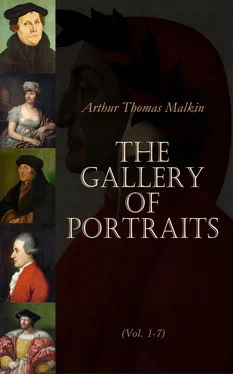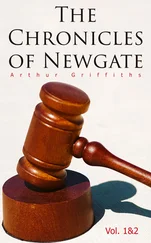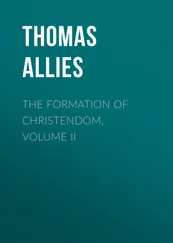From this time Newton devoted unremitting attention to the development of his system, and a period of nearly two years was entirely absorbed by it. In 1684 the outline of the mighty work was finished; yet it is likely that it would still have remained unknown, had not Halley, who was himself on the track of some part of the discovery, gone to Cambridge in August of that year to consult Newton about some difficulties he had met with. Newton communicated to him a treatise De Motu Corporum, which afterwards, with some additions, formed the first two books of the Principia. Even then Halley found it difficult to persuade him to communicate the treatise to the Royal Society, but he finally did so in April, 1686, with a desire that it should not immediately be published, as there were yet many things to complete. Hooke, whose unwearied ingenuity had guessed at the true law of gravity, immediately claimed to himself the honour of the discovery; how unjustly it is needless to say, for the merit consisted not in the conjecture but the demonstration. Newton was inclined in consequence to prevent the publication of the work, or at least of the third part, De Mundi Systemate, in which the mathematical conclusions of the former books were applied to the system of the universe. Happily his reluctance was overcome, and the whole work was published in May, 1687. Its doctrines were too novel and surprising to meet with immediate assent; but the illustrious author at once received the tribute of admiration for the boldness which had formed, and the skill which had developed his theory, and he lived to see it become the common philosophical creed of all nations.
We next find Newton acting in a very different character. James II. had insulted the University of Cambridge by a requisition to admit a Benedictine monk to the degree of Master of Arts without taking the oaths enjoined by the constitution of the University. The mandate was disobeyed; and the Vice-Chancellor was summoned before the Ecclesiastical Commission to answer for the contempt. Nine delegates, of whom Newton was one, were appointed by the University to defend their proceedings; and their exertions were successful. He was soon after elected to the Convention Parliament as member for the University of Cambridge. That parliament was dissolved in February, 1690, and Newton, who was not a candidate for a seat in the one which succeeded it, returned to Cambridge, where he continued to reside for some years, notwithstanding the efforts of Locke, and some other distinguished persons with whom he had become acquainted in London, to fix him permanently in the metropolis.
During this time he continued to be occupied with philosophical research, and with scientific and literary correspondence. Chemical investigations appear to have engaged much of his time; but the principal results of his studies were lost to the world by a fire in his chambers about the year 1692. The consequences of this accident have been very differently related. According to one version, a favourite dog, called Diamond, caused the mischief, and the story has been often told, that Newton was only provoked, by the loss of the labour of years, to the exclamation, “Oh, Diamond! Diamond! thou little knowest the mischief thou hast done.” Another, and probably a better authenticated account, represents the disappointment as preying deeply on his spirits for at least a month from the occurrence.
We have more means of tracing Newton’s other pursuits about this time. History, chronology, and divinity were his favourite relaxations from science, and his reputation stood high as a proficient in these studies. In 1690 he communicated to Locke his ‘Historical account of two notable corruptions of the Scriptures,’ which was first published long after his death. About the same time he was engaged in those researches which were afterwards embodied in his Observations on the Prophecies: and in December, 1692, he was in correspondence with Bentley on the application of his own system to the support of natural theology.
During the latter part of 1692 and the beginning of 1693 Newton’s health was considerably impaired, and he laboured in the summer under some epidemic disorder. It is not likely that the precise character or amount of his indisposition will ever be discovered; but it seems, though the opinion has been much controverted, that for a short time it affected his understanding, and that in September, 1693, he was not in the full possession of his mental faculties. The disease was soon removed, and there is no reason to suppose that it ever recurred. But the course of his life was changed; and from this time forward he devoted himself chiefly to the completion of his former works, and abstained from any new career of continued research.
His time indeed was less at his own disposal than it had been. In 1696, Mr. Montague, the Chancellor of the Exchequer, an early friend of Newton, appointed him to the Wardenship of the Mint, and in 1699 he was raised to the office of Master. He removed to London, and was much occupied, especially during the new coinage in 1696 and 1697, with the duties of his office. Still he found time to superintend the editions of his earlier works, which successively appeared with very material additions and improvements. The great work on Optics appeared for the first time in a complete form in 1704, after the death of Hooke had freed Newton from the fear of new controversies. It was accompanied by some of his earlier mathematical treatises; and contained also, in addition to the principal subject of the work, suggestions on a variety of subjects of the highest philosophical interest, embodied in the shape of queries. Among these is to be found the first suggestion of the polarity of light; and we may mention at the same time, although they occur in a different part of the work, the remarkable conjectures, since verified, of the combustible nature of the diamond, and the existence of an inflammable principle in water. The second edition of the Principia appeared under the care of Cotes in 1713, after having been the subject of correspondence between Newton and his editor for nearly four years. Dr. Pemberton published a third edition in 1725, and he frequently communicated about the work with Newton who was then eighty-two years old.
These were the chief scientific employments of Newton’s latter life: and it is not necessary to particularize all its minor details. In 1712 he made some improvements in his Arithmetica Universalis, a work containing his algebraical discoveries, of which Whiston had surreptitiously published an edition in 1707. It is also worthy of remark that at the beginning of the year 1697, John Bernouilli addressed two problems as a challenge to the mathematicians of Europe, and that Leibnitz in 1716 made a similar appeal to the English analysts; and that Newton in each case undertook and succeeded in the investigation.
This enumeration of Newton’s philosophical employments has far outrun the order of time. After his return to London, compliments and honours flowed in rapidly upon him. In 1699 he was elected one of the first foreign associates of the Académie des Sciences at Paris; and in 1701 he was a second time returned to Parliament by the University of Cambridge. He did not, however, long retain his seat. At the election in 1705 he was at the bottom of the poll, and he does not appear again to have been a candidate. In 1703 he was chosen President of the Royal Society, and held that office till his death. In 1705 he was knighted by Queen Anne upon her visit to Cambridge.
Newton’s life in London was one of much dignity and comfort. He was courted by the distinguished of all ranks, and particularly by the Princess of Wales, who derived much pleasure from her intercourse both with him and Leibnitz. His domestic establishment was liberal, and was superintended during great part of his time by his niece, Mrs. Barton, a woman of much beauty and talent, who married Mr. Conduitt, his assistant and successor at the Mint. Newton’s liberality was almost boundless, yet he died rich.
Читать дальше












